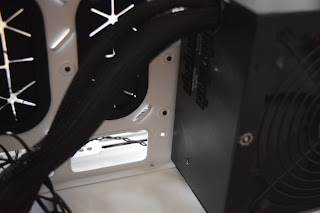Project Fortis
Often times we get so wrapped up in learning new things, adapting and changing to the needs of the moment with never really having a chance to practice the skills we already have. For me that's repairing, troubleshooting, and building PC's. With the popularity and movement towards mobile computing everyone switched to using tablets, iPads, smart phones, and laptops. I know in our household we all switched to Chromebooks and never really had to worry about another virus or computer issue again.
But I figured with me training on information security and dealing with computer networks it might be a good time for me to catch up on the latest PC building trends and find out if this old dog can learn new tricks. In this next series of blogs I will take you with me on my journey to build a PC that will prove to be a "Strong" competitor among other Mid Level Gaming PC's on the market.
Previous PC Builds
My last two official builds were more than 7 years ago and it's safe to say they were nowhere near an official PC build, more of a hodgepodge Frankenstein looking PC using spare parts I had lying around at the time and only purchasing a graphics card that was decent to say the least. Both built on ASUS motherboards, my motherboard of choice, and running dual core Intel Pentium CPU's. One being my HTPC custom build and the other a daily general use desktop PC hidden inside an old Antec nine hundred series gaming case. I don't really count the Dell Inspiron laptop or the Amahi server as official builds even though the Dell laptop was upgraded with more RAM, and an SSD hard drive. The Amahi server was just the same gear with an upgraded motherboard and CPU (AMD Athlon 5150).
When researching for my next build I started with a question on what I consider is the foundation of any PC build, what kind of case do I want? I really didn't want a tall or large case. Before the Home Server was setup I needed a case to fit multiple hard drives and at least two CD/DVD drives for DVD burning. No longer the case today (pun intended). And with the idea of switching from an air cooled CPU to a water cooled CPU the need for a large case to fit a dozen fans is a thing of the past. I landed on choosing a Micro ATX case for my build and skipped having to worry about going any smaller (Mini ITX).
A case to set sail on a journey
At CES several companies displayed their latest PC cases and several were very interesting. The common players in the Gaming PC case arena were present including Lian Li, Enermax, Thermaltake, Cooler Master, and of course Corsair. It was Corsair that caught my attention with their Crystal series which really stood out to me with the builds they had on display, especially the all white build inside a small form factor case. Upon research I found that it was the Crystal 280x series which comes in white and black. The case was on sale online through many retailers and direct from China distributors. The price point was right around the budget I had to purchase a case and the size was exactly what I was looking for. The case comes with a more modern design like no DVD bays, a separate compartment for power supply and hard drives. The tempered glass allows you to show off your build and keeps the noise level down too. The selling point was definitely the RGB fans with built in controller and Corsair's iCUE software that allows full control of the fan colors across their entire line of RGB fans and water coolers to sync up the colors. I ordered the white Corsair Crystal 280x RGB version for this build.
































Nice build man. I'm still working on mine. Project Fortress complete.
ReplyDelete